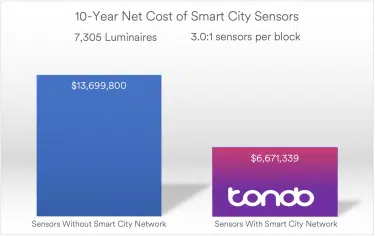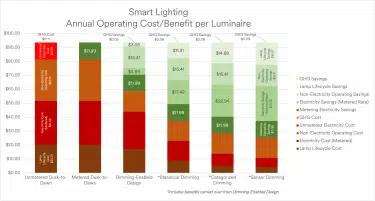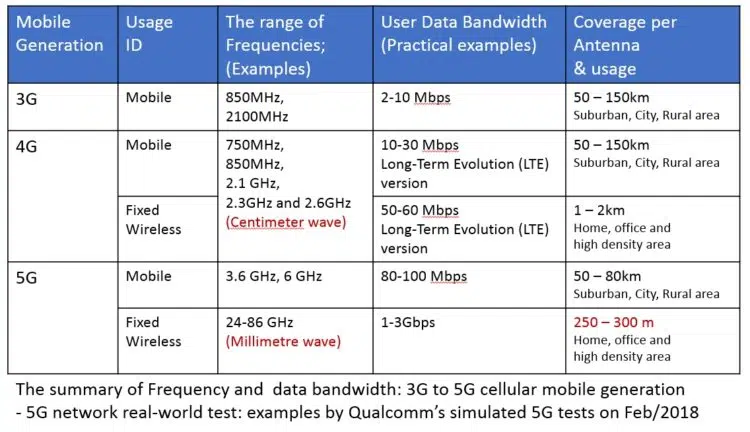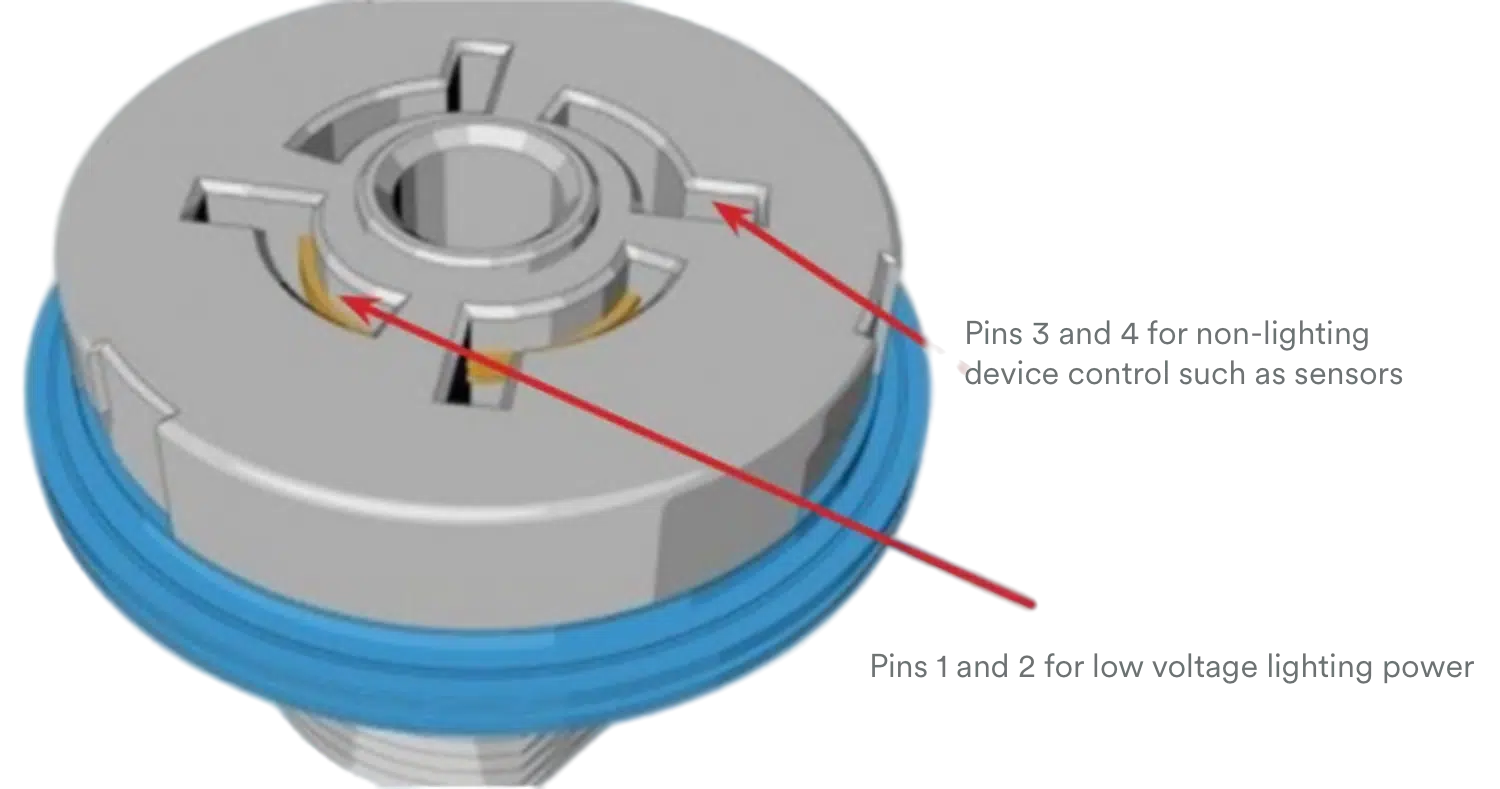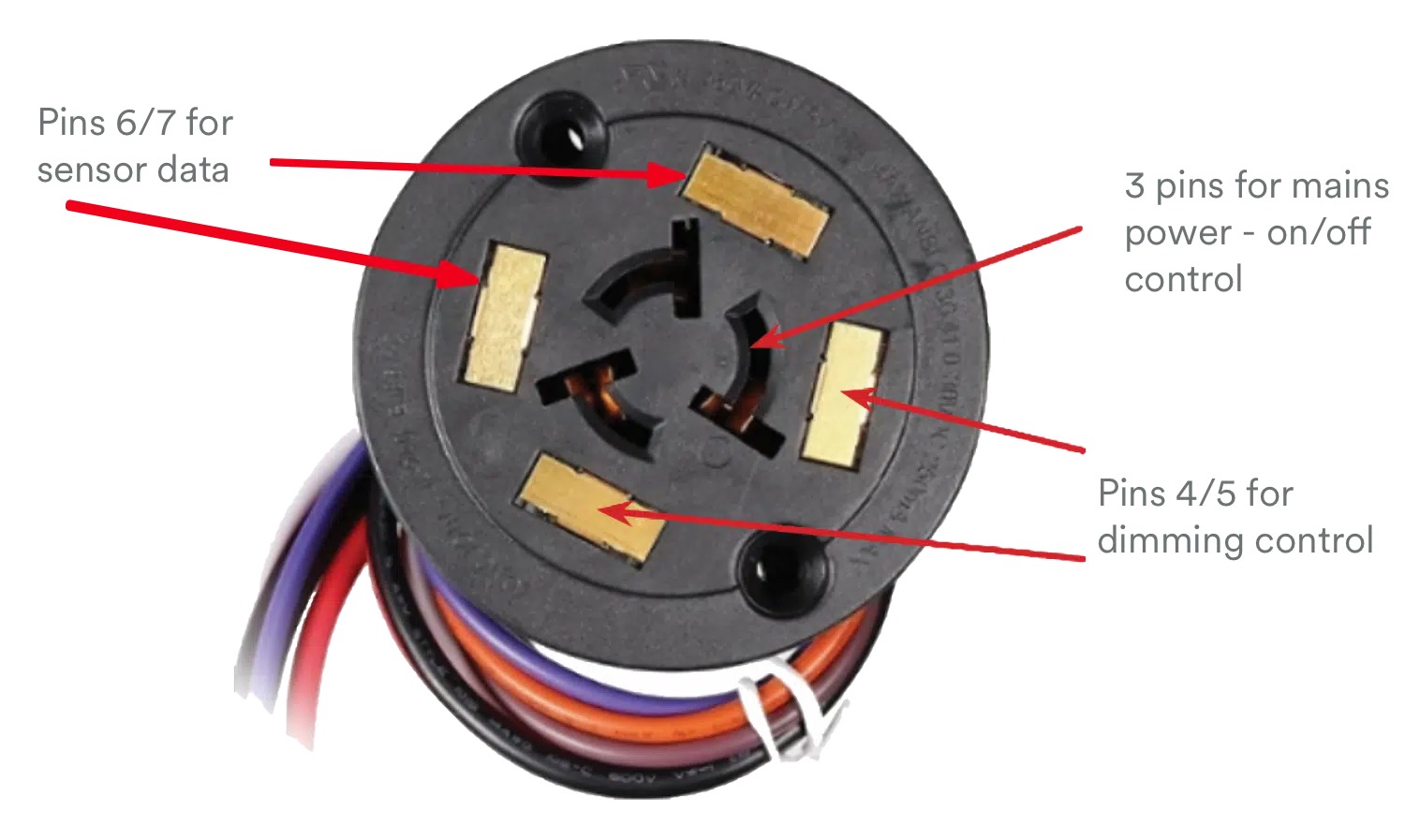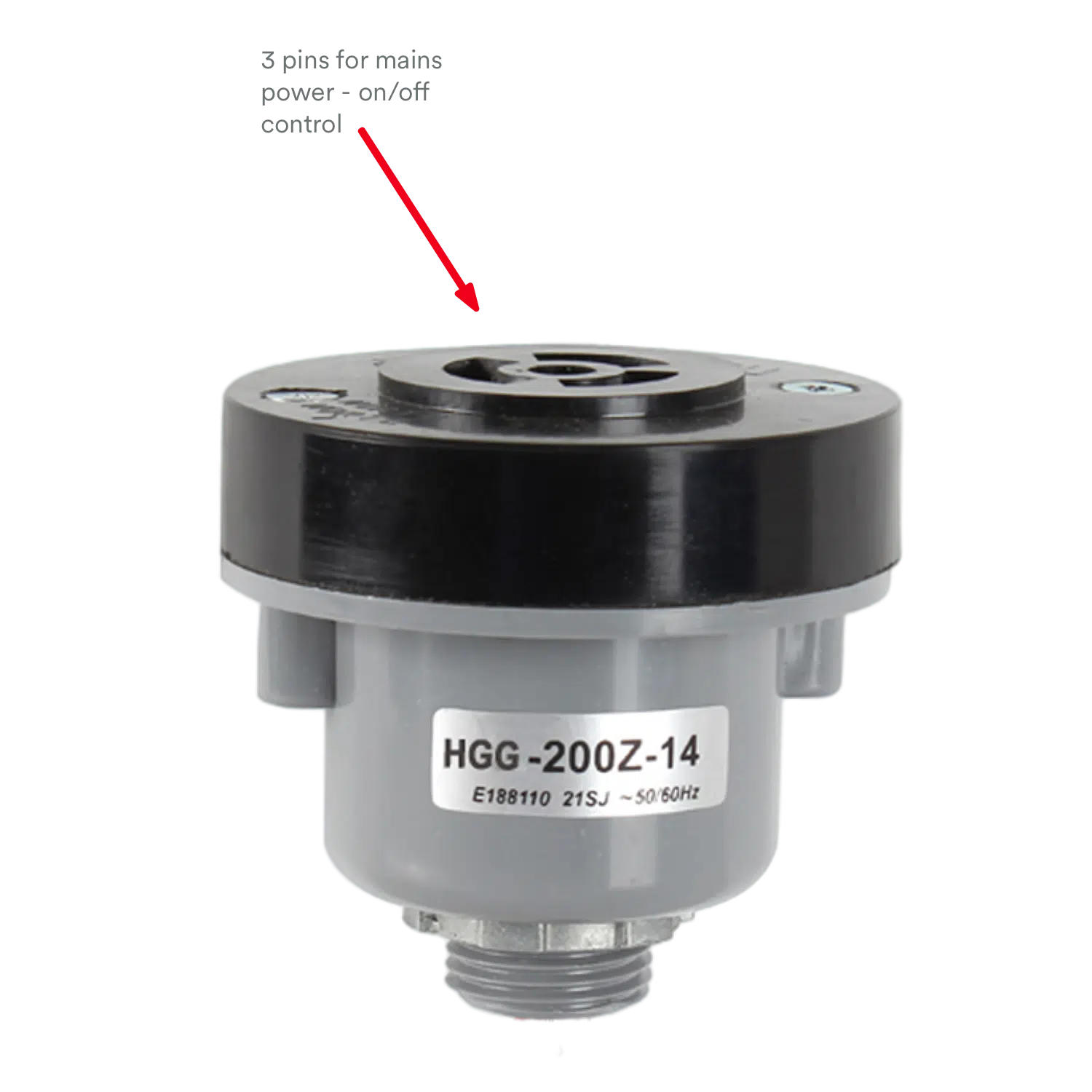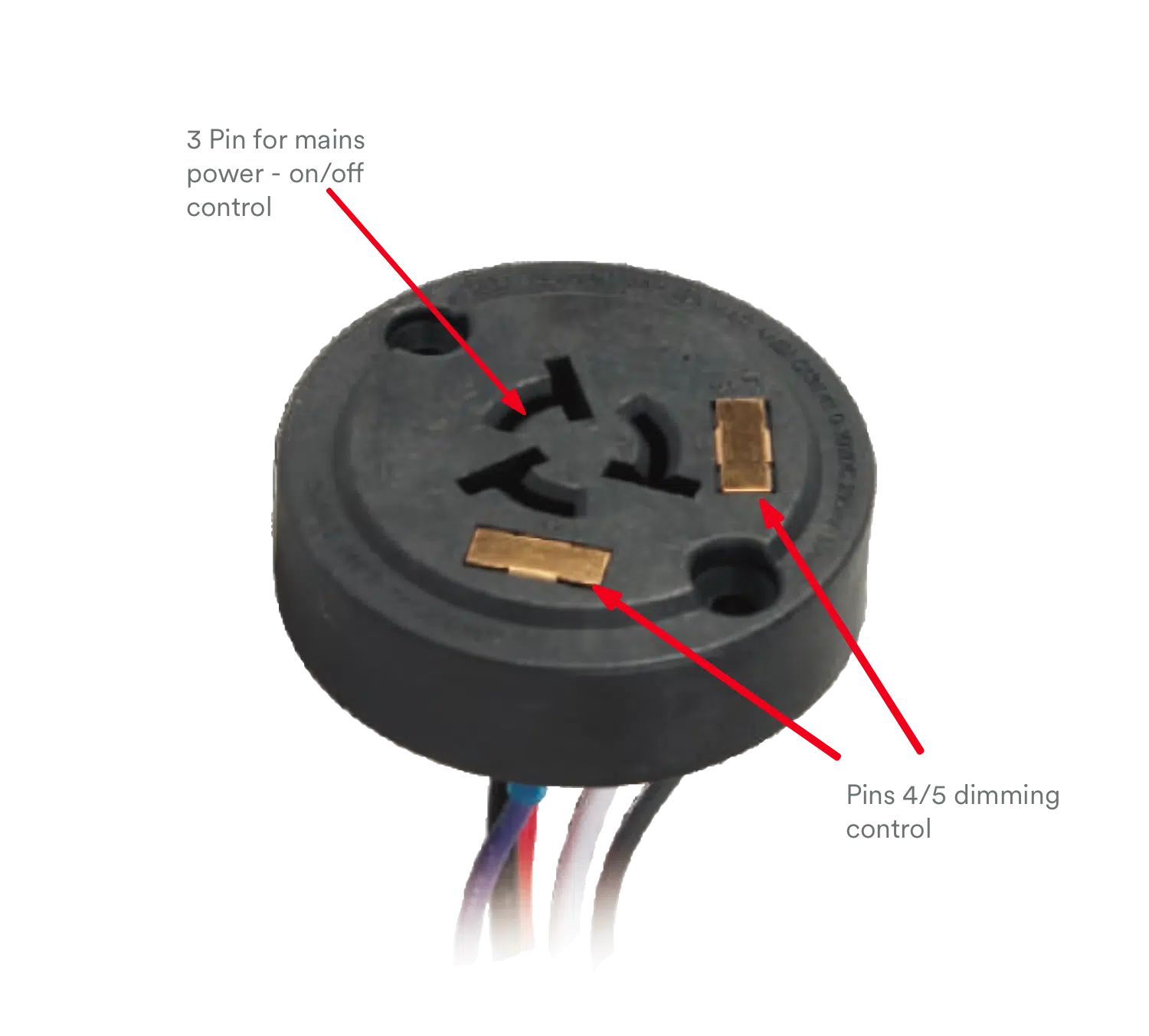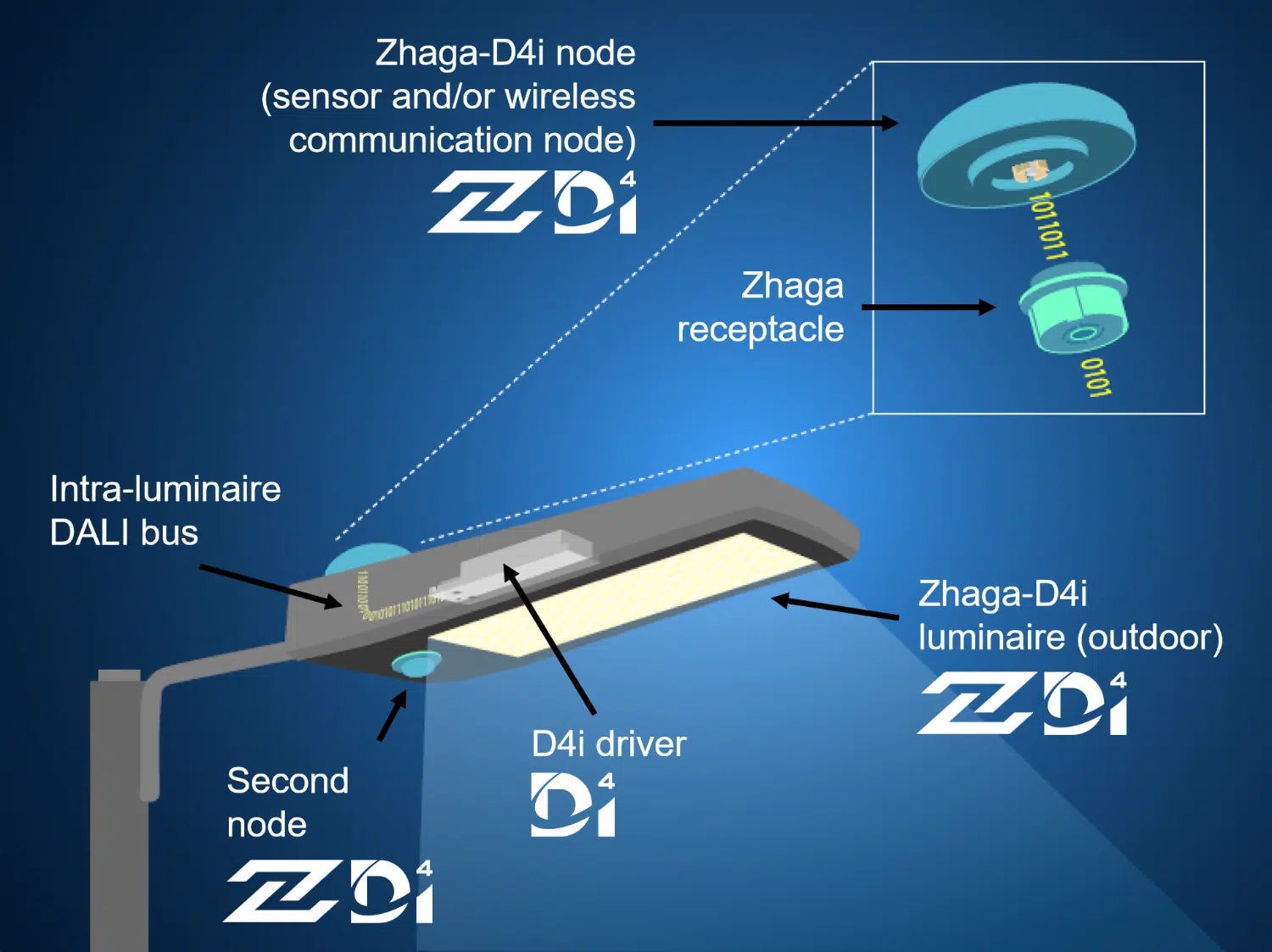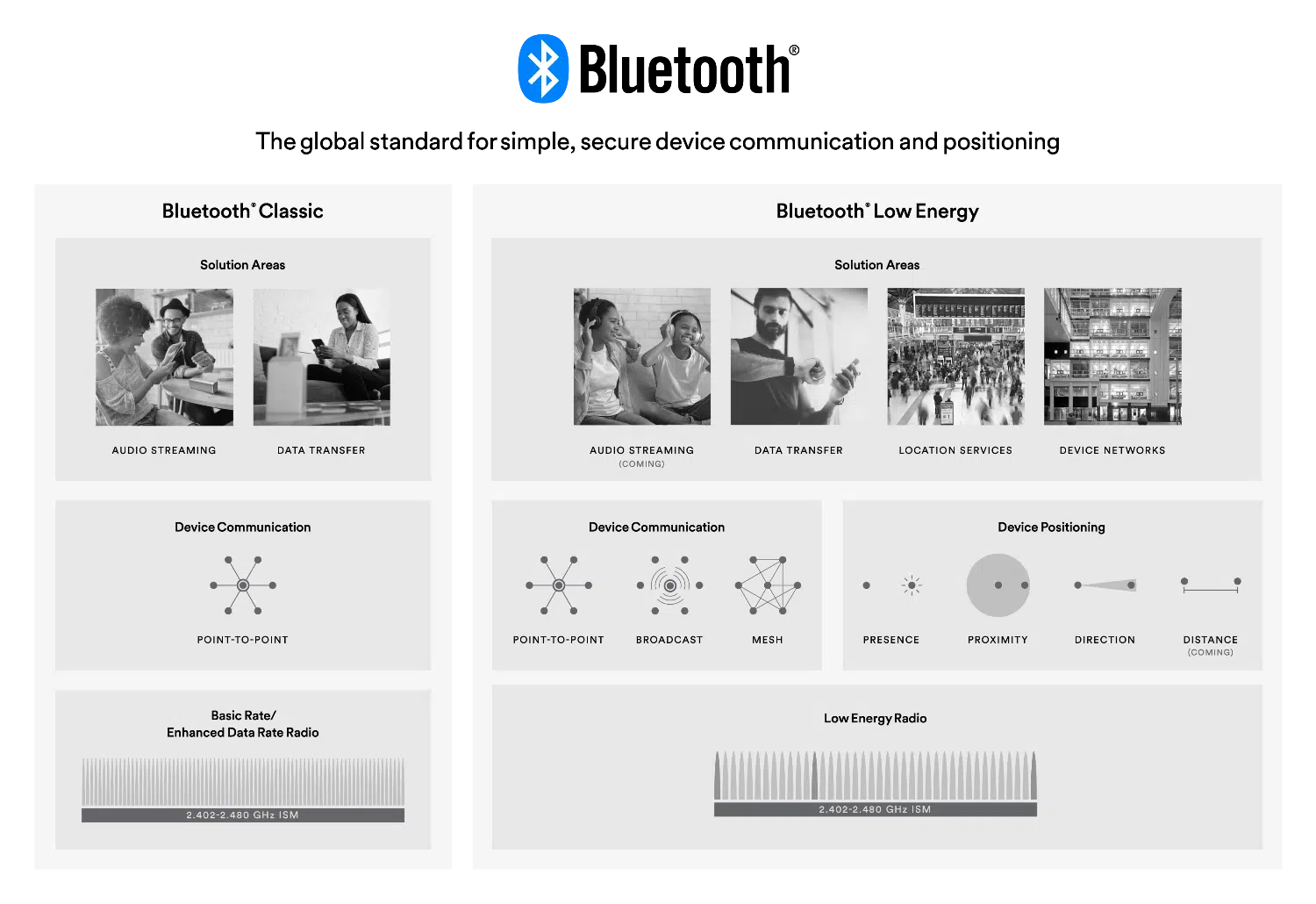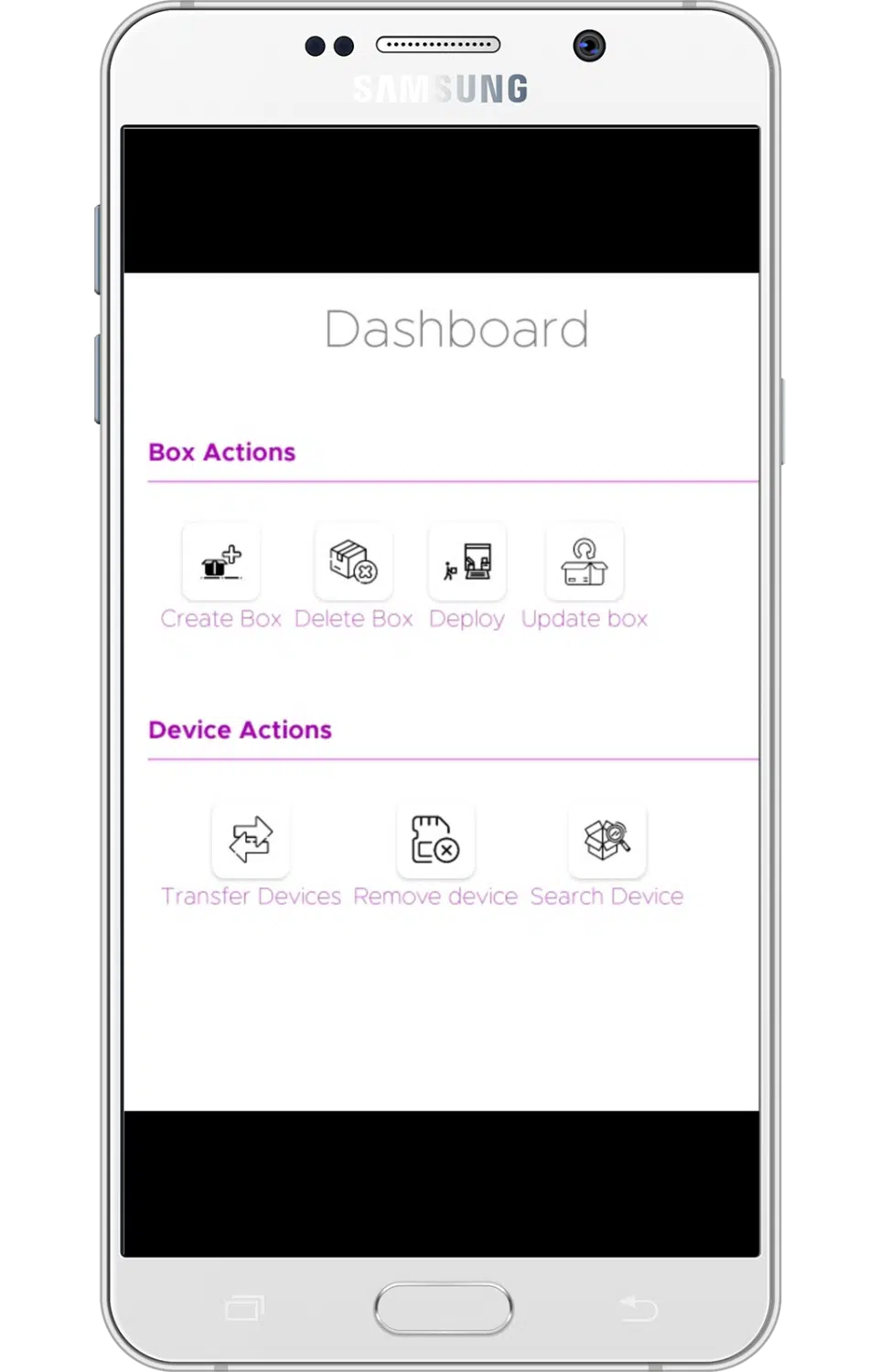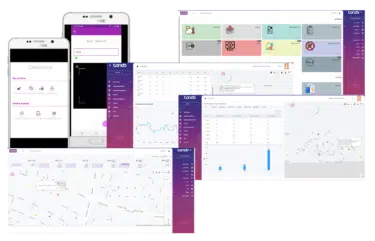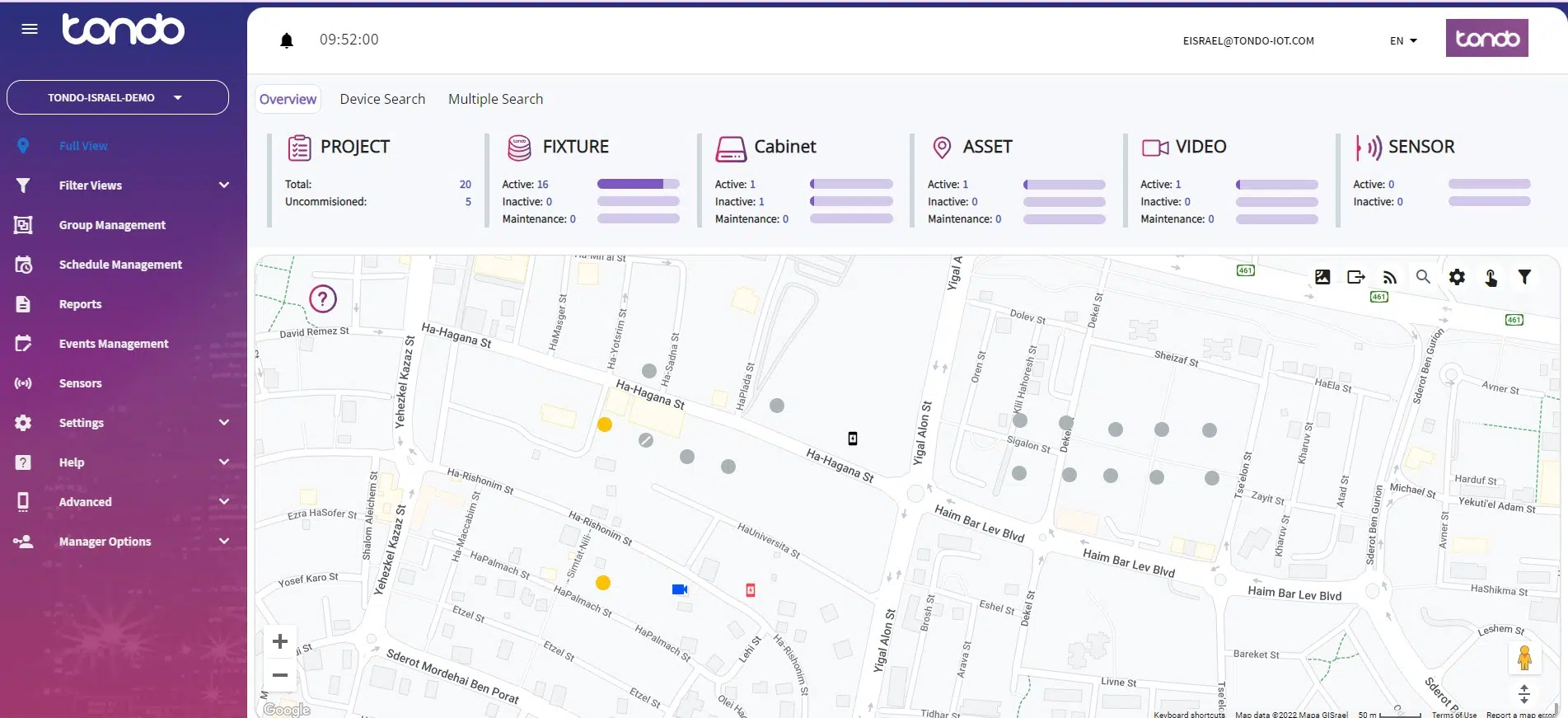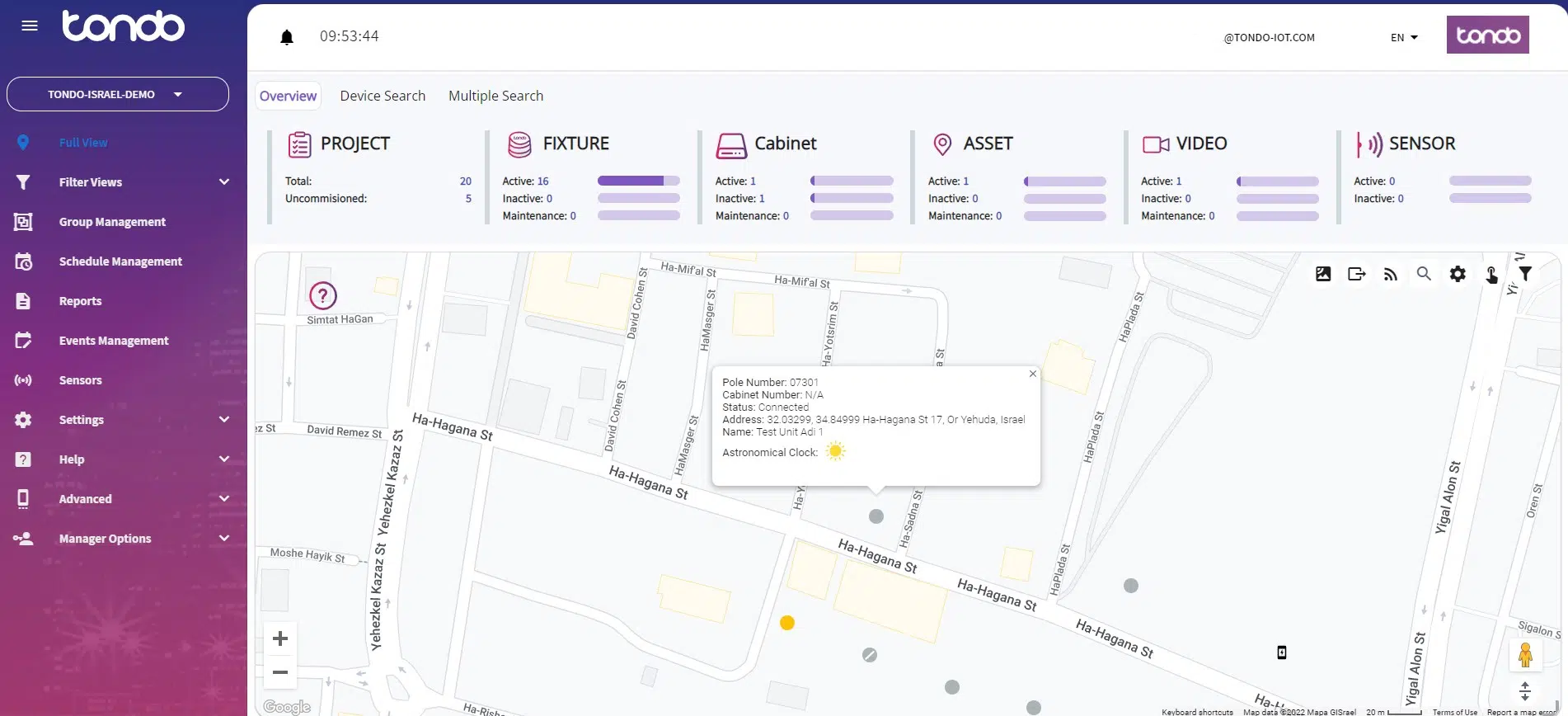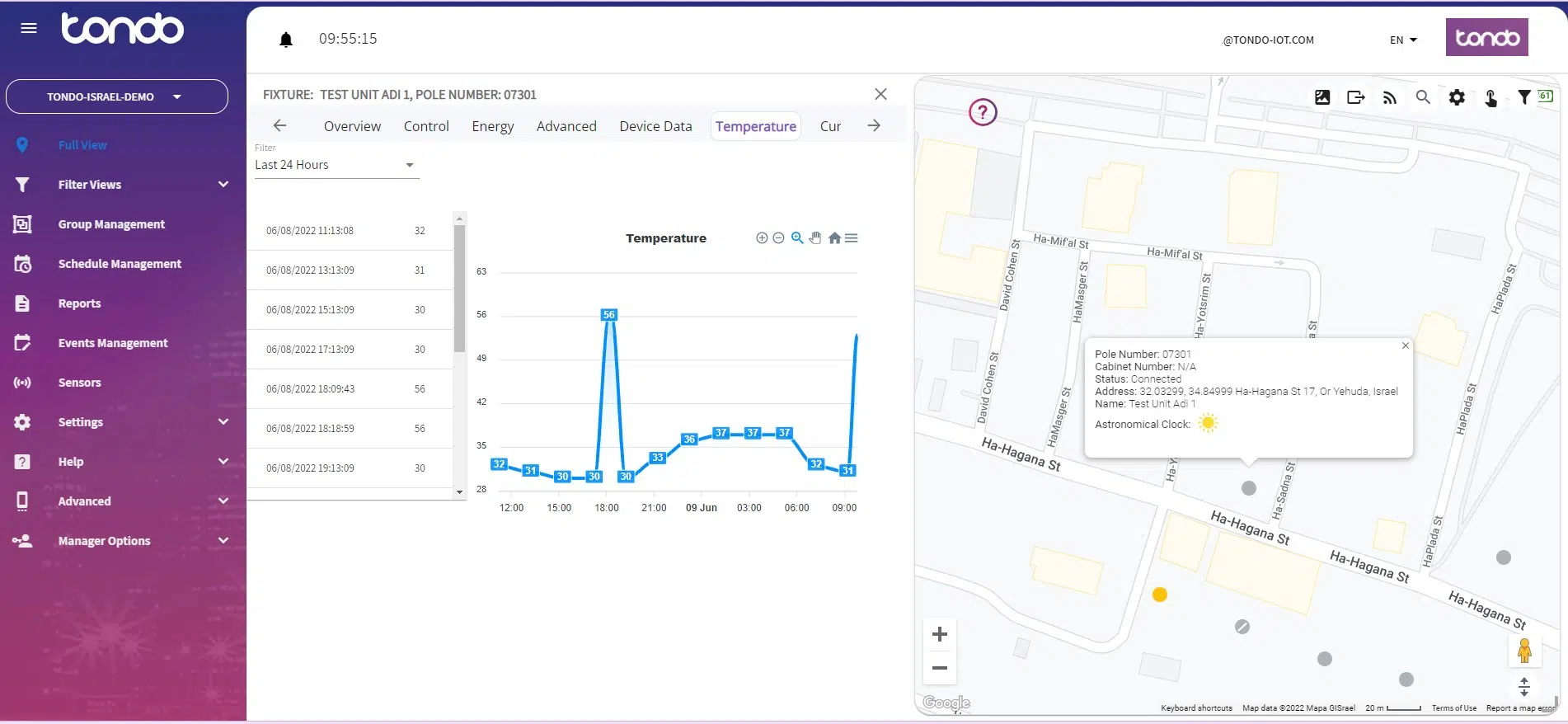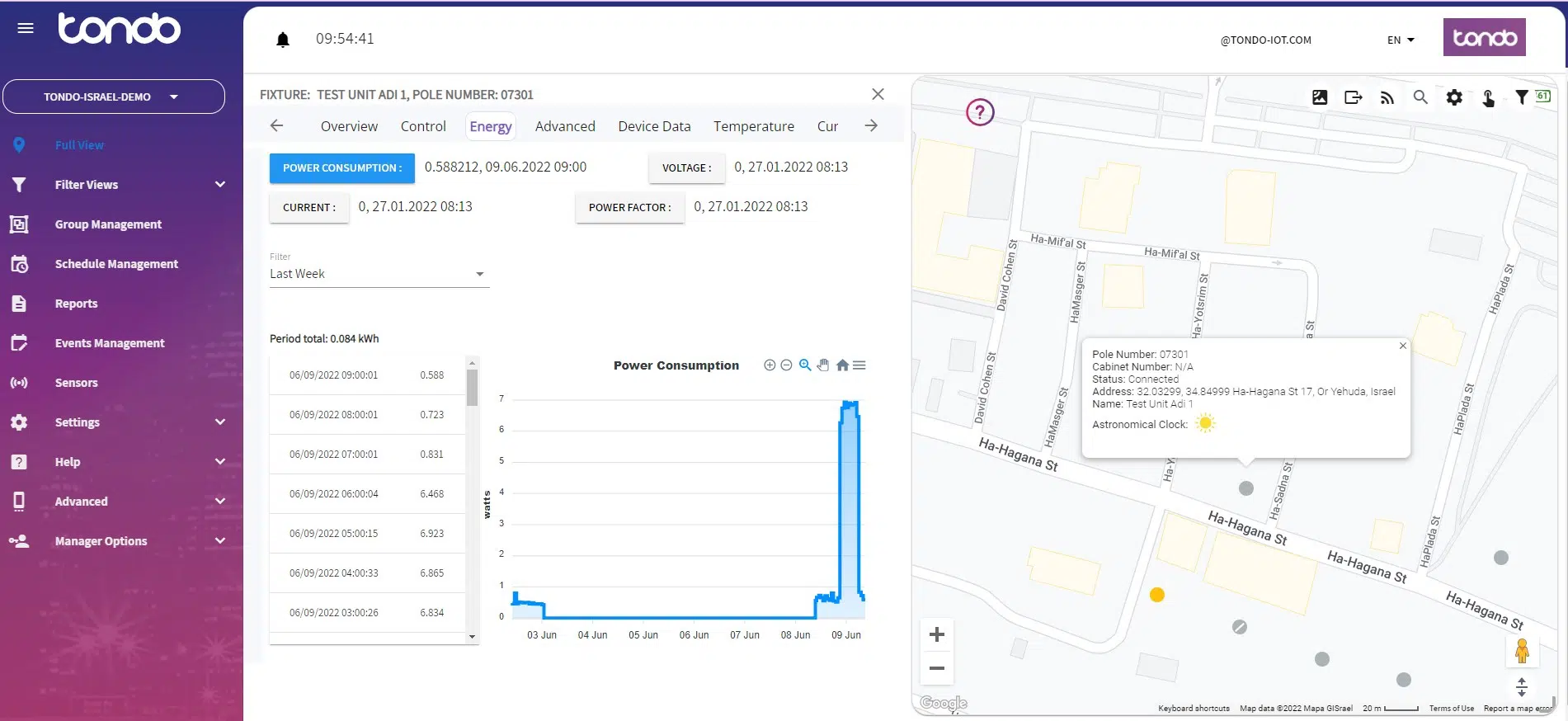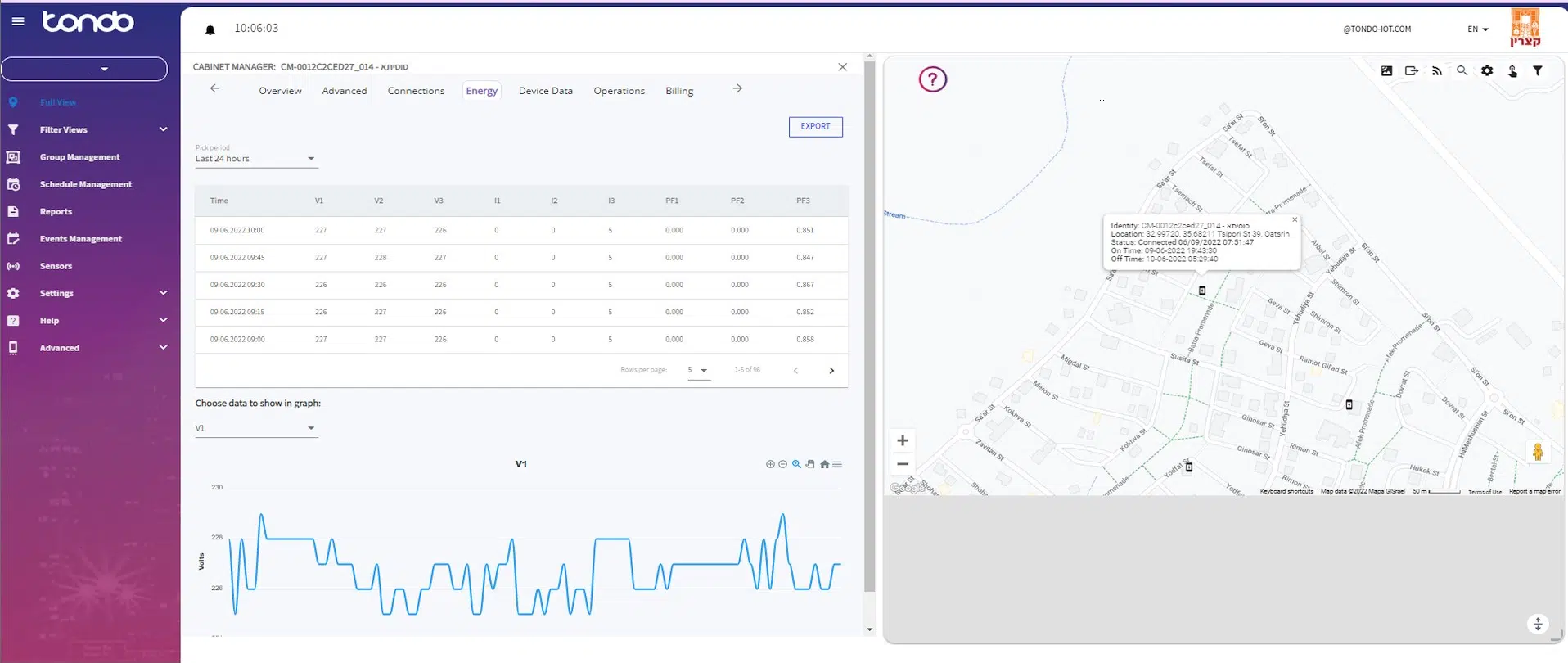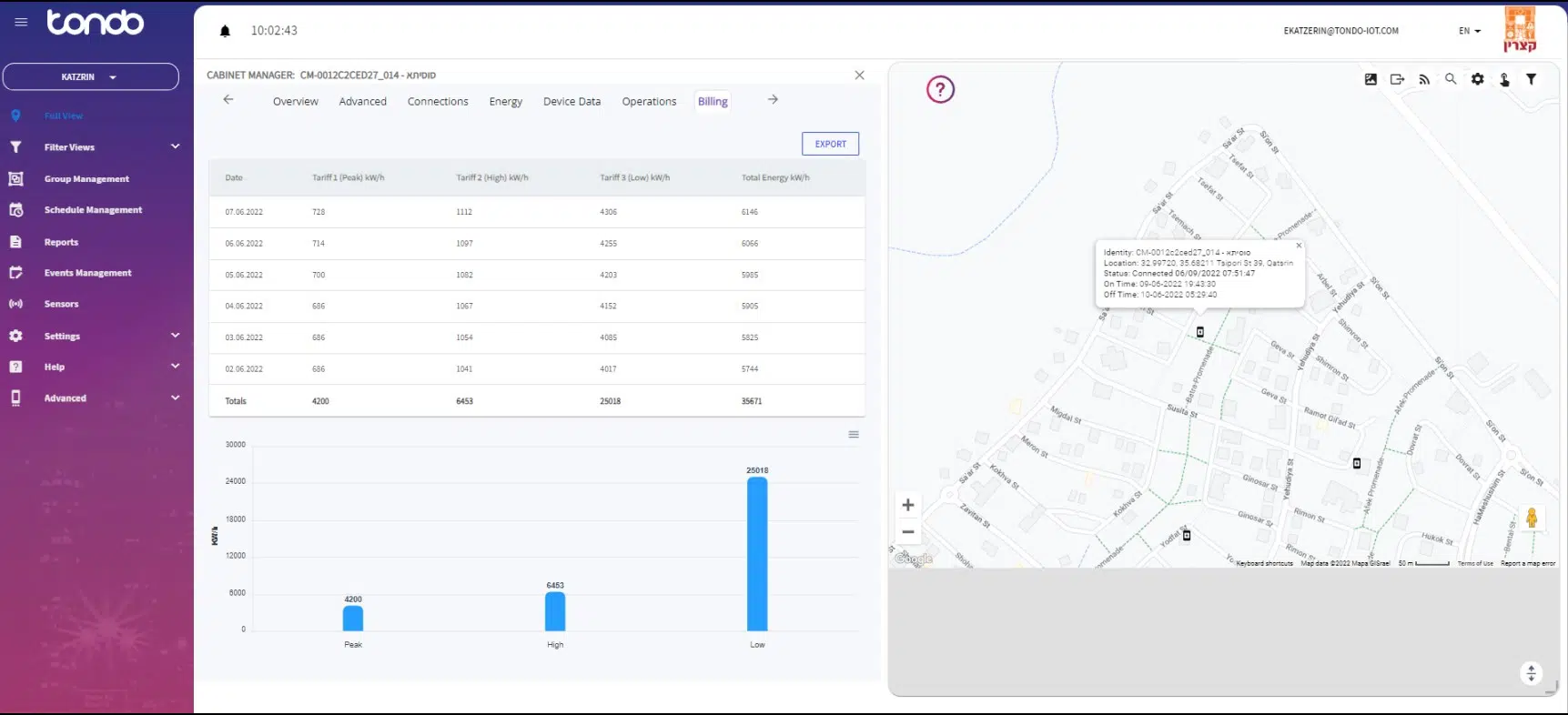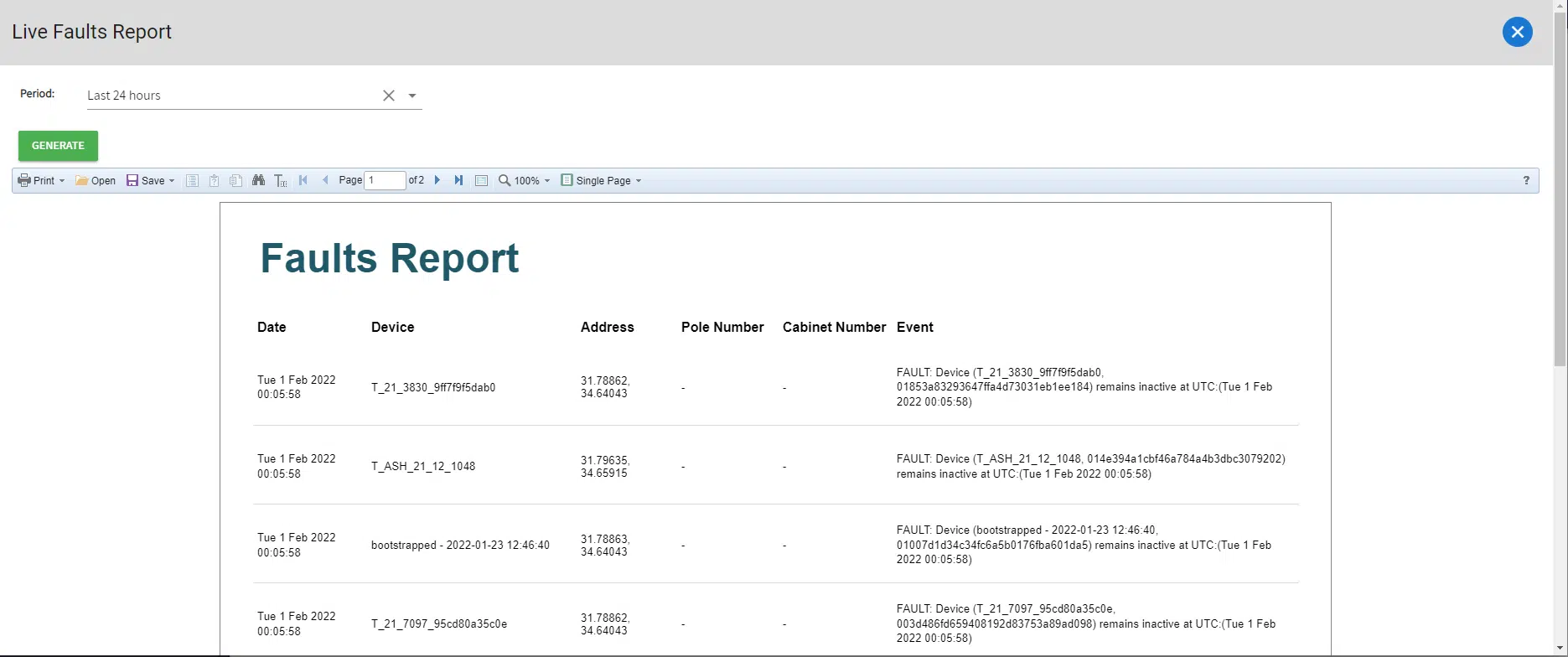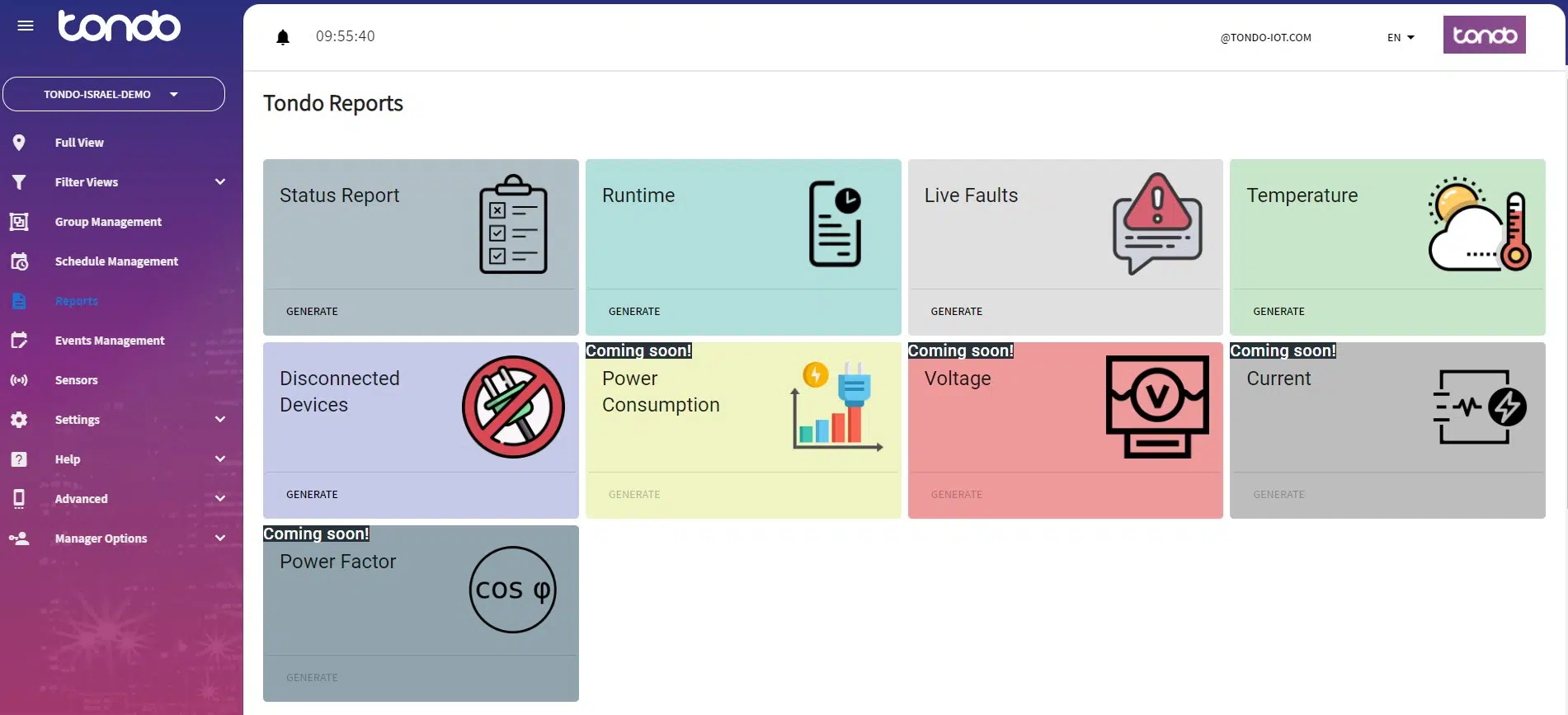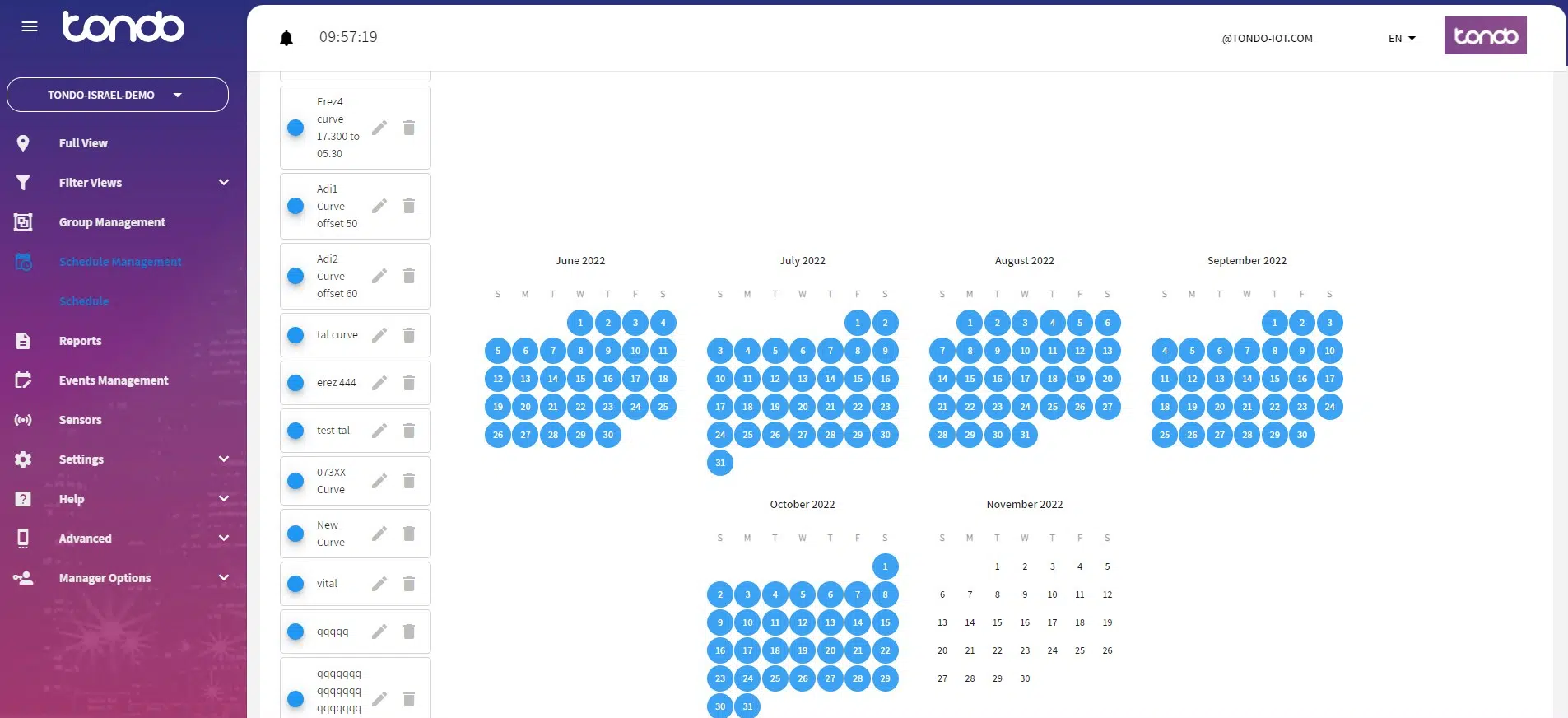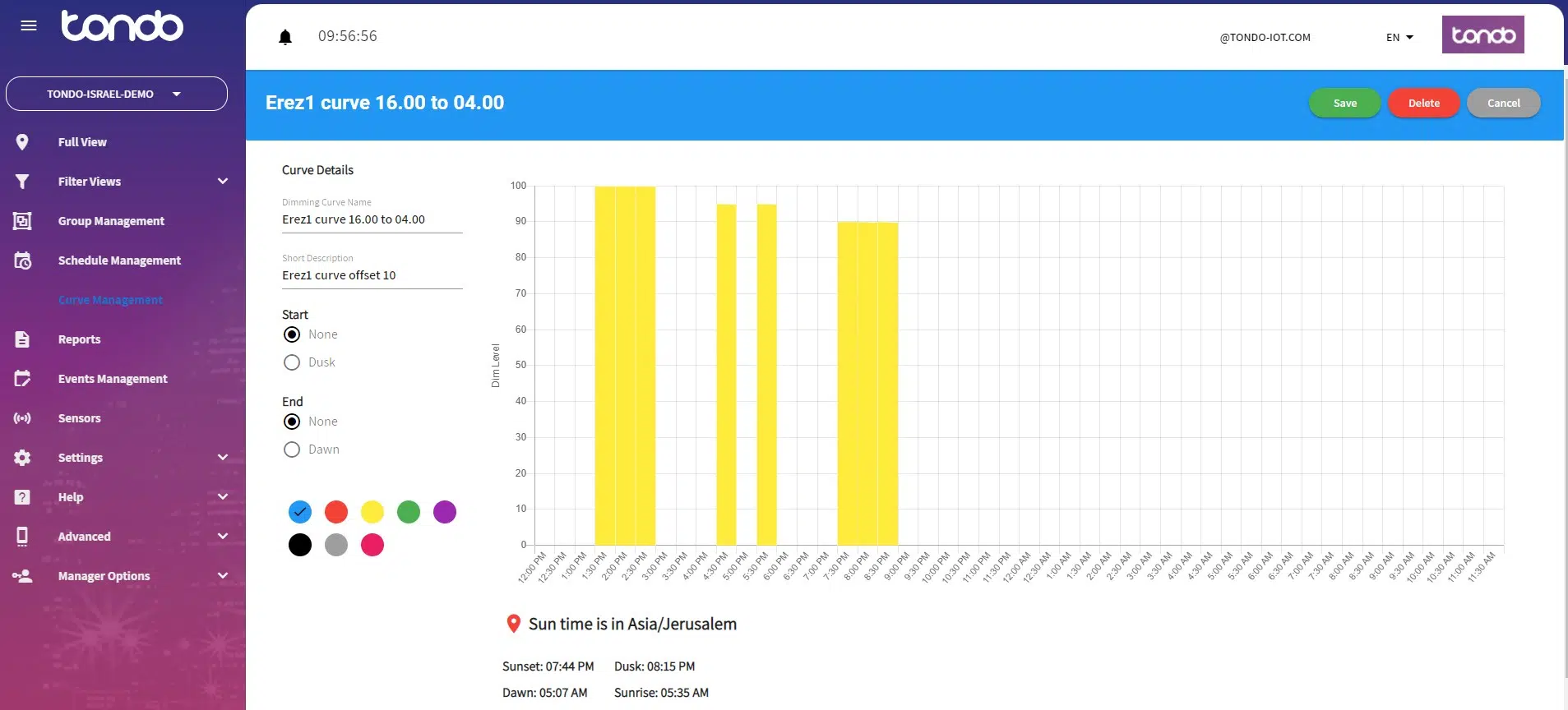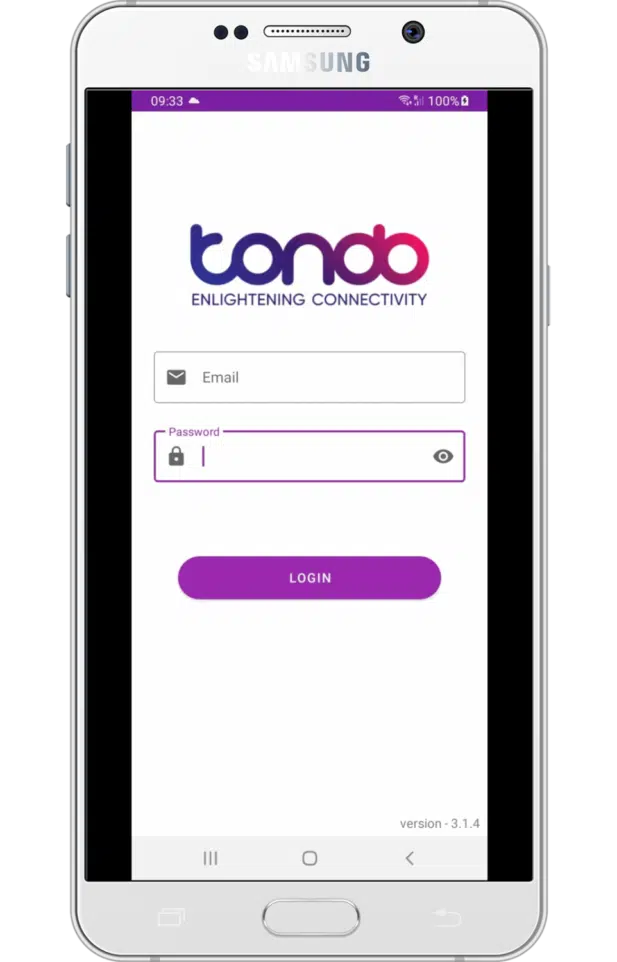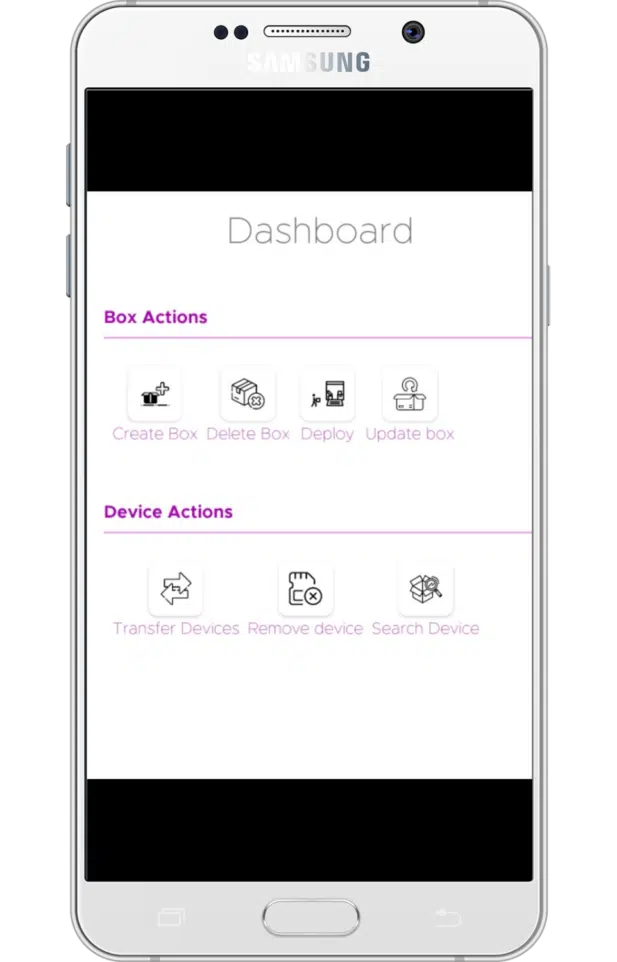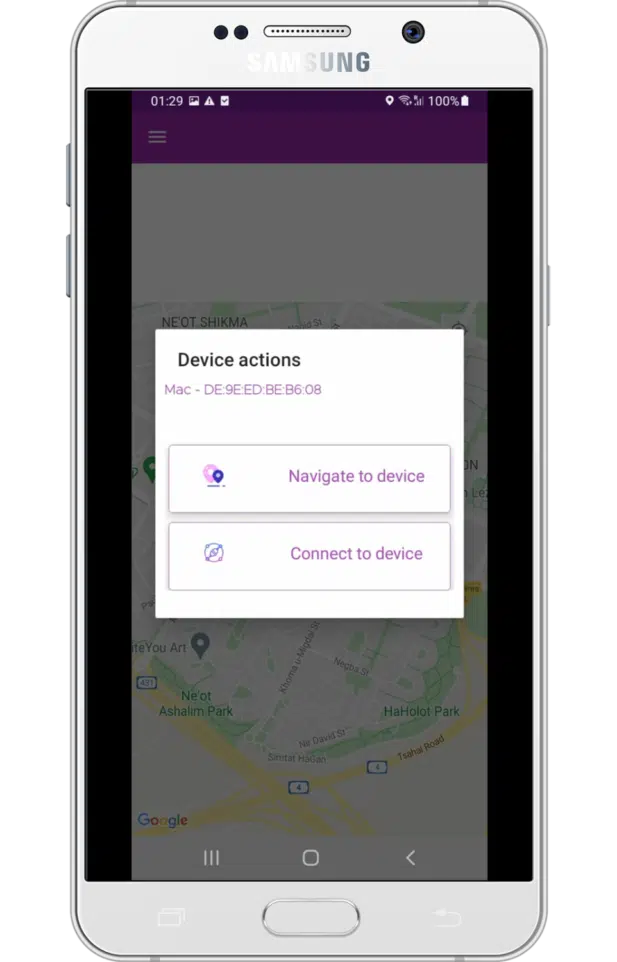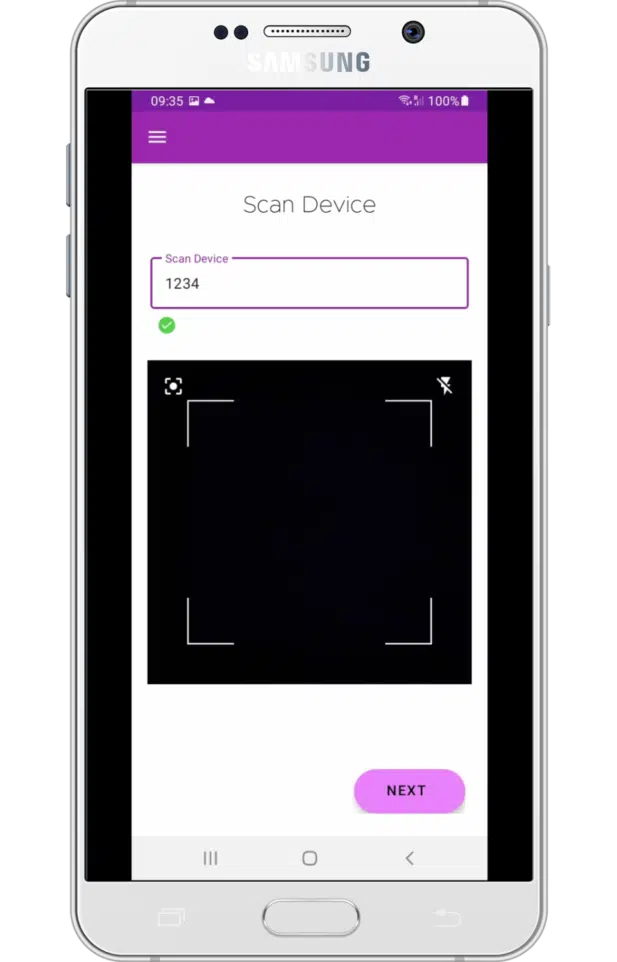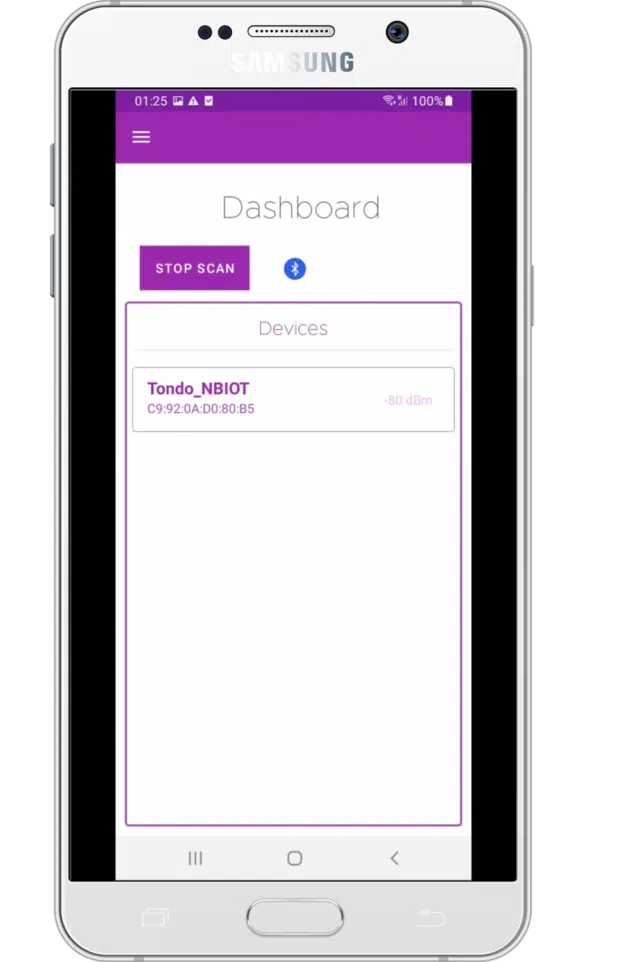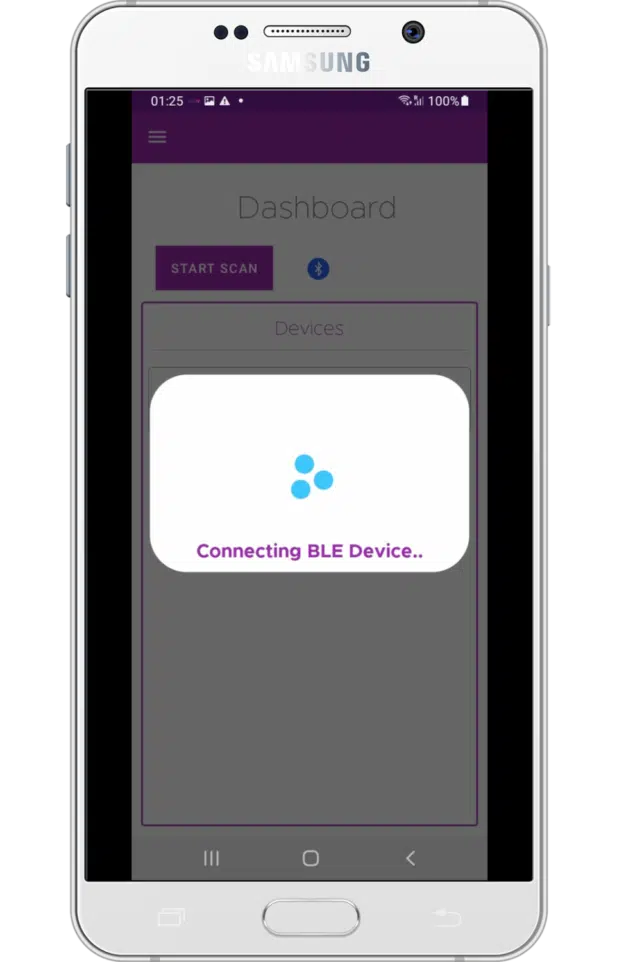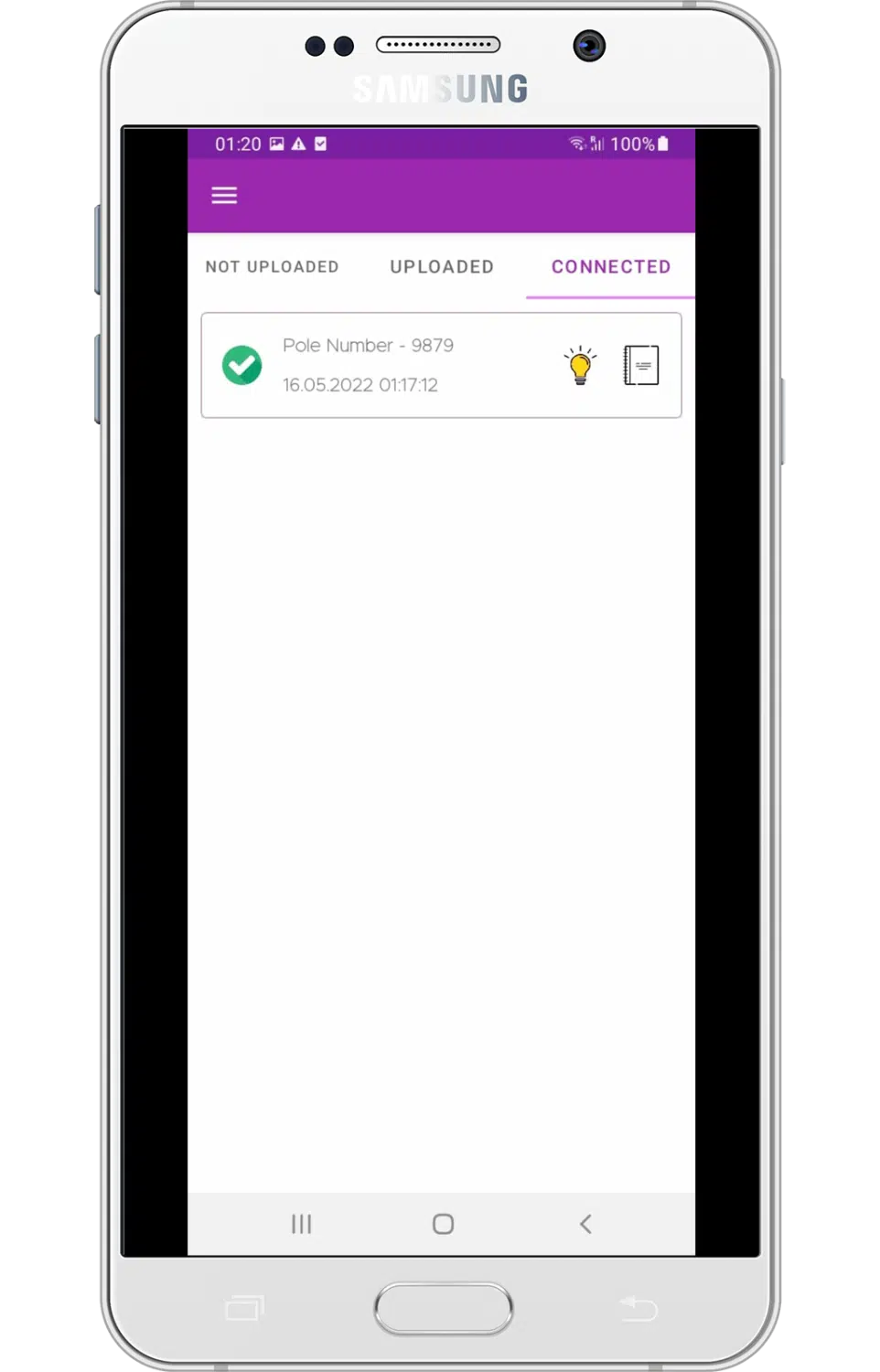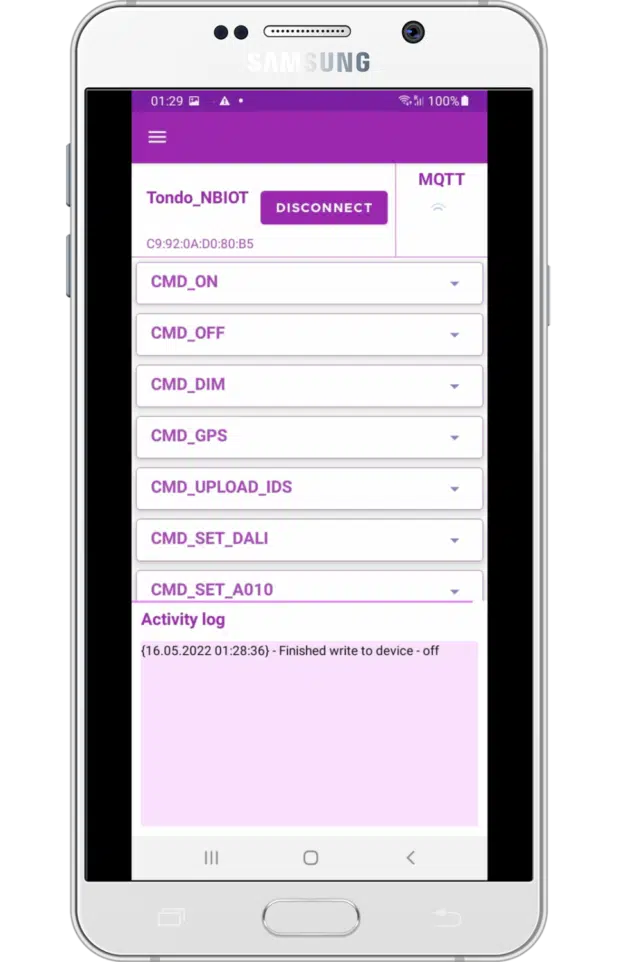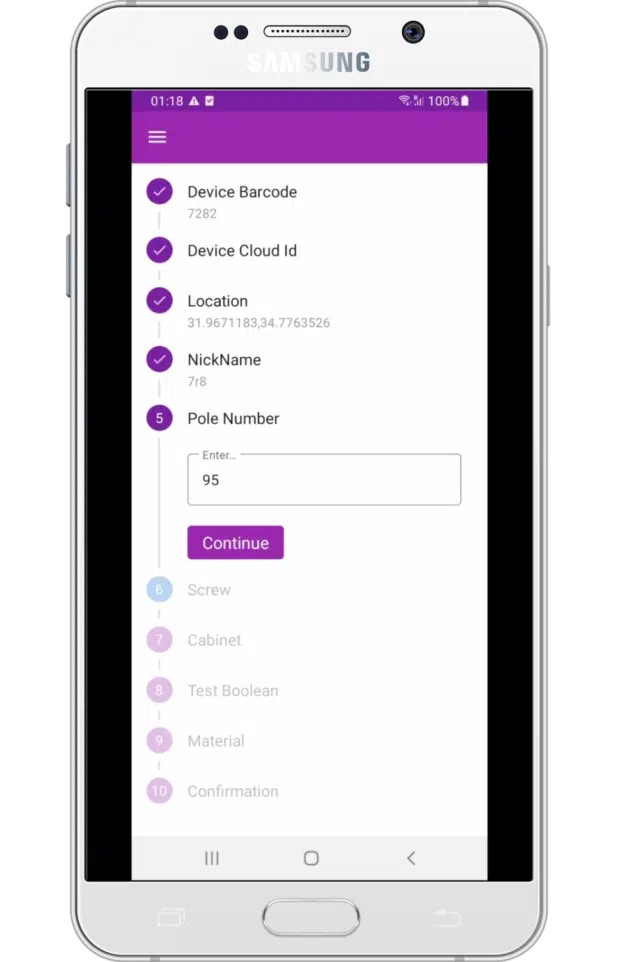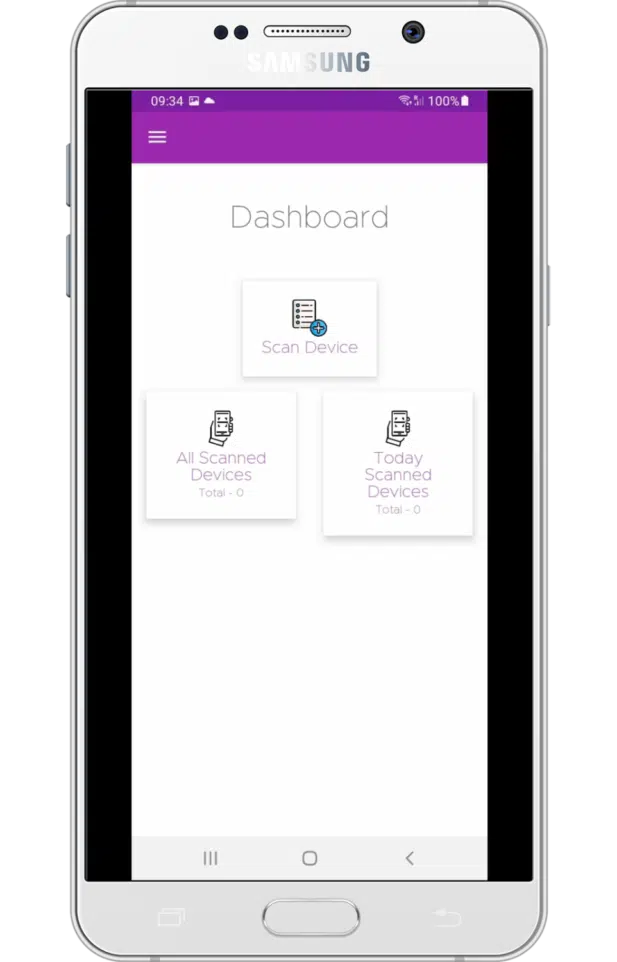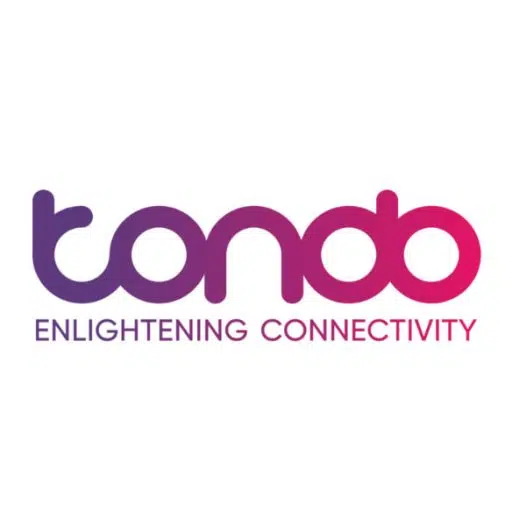Tondo Smart Lighting and Smart City Controllers
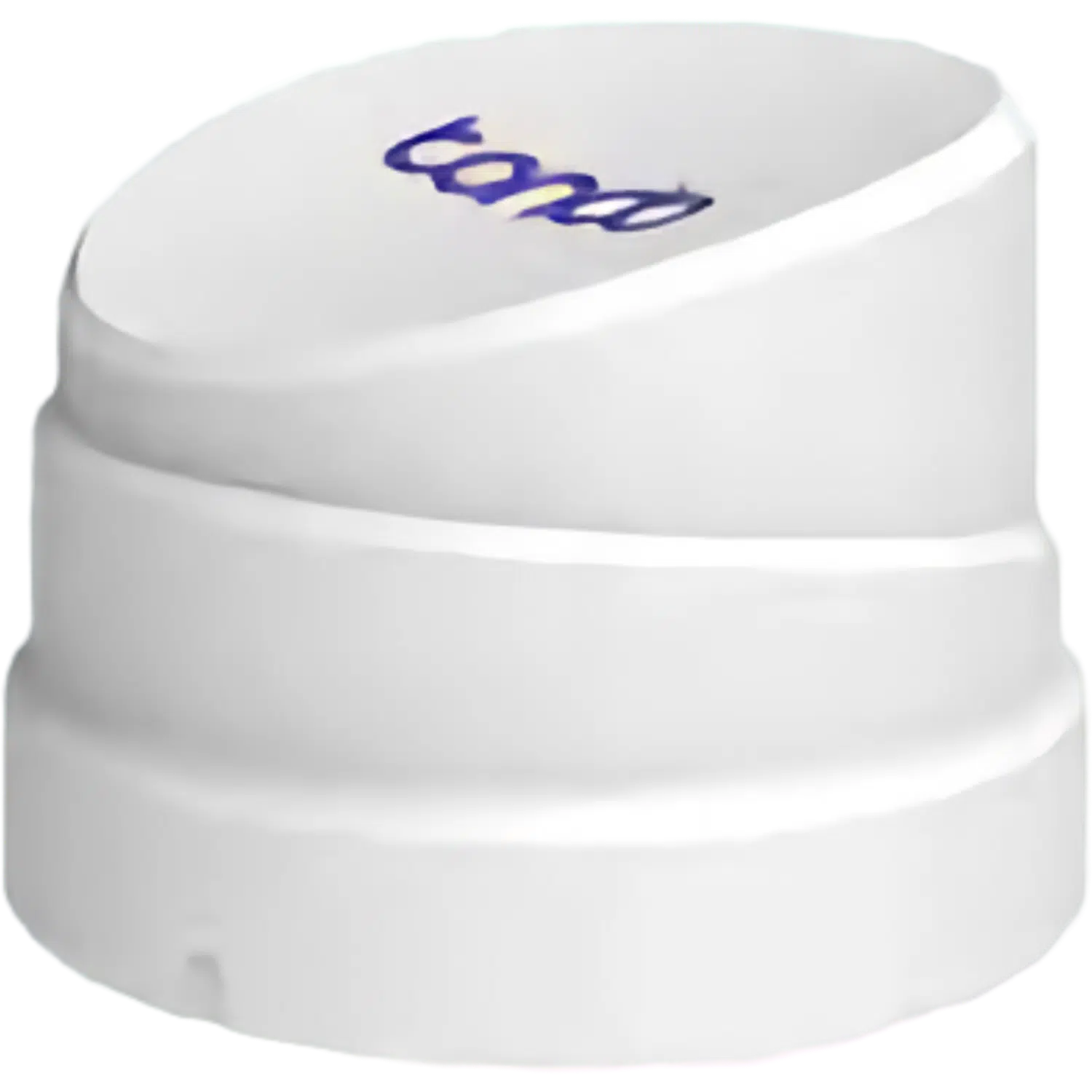
Edge-IQ Smart Lighting Controller
THE FUTURE OF SMART ROADWAY AND AREA LIGHTING
- Dynamic Adaptive Lighting Control: Edge-IQ works with our Motion-IQ presence sensor and our Cloud-IQ Deep Learning AI to monitor pedestrian traffic levels and effortlessly optimize your lighting levels for maximum safety and electricity savings
- Plug-and-Play Simplicity: Compatible with a wide array of luminaire connectors, installation requires no technical skills and activation is automatic in less than one minute!
- Universal Communication: Our controller effortlessly syncs with the industry’s leading lighting protocols, ensuring your lights always speak the right language.
- Seamless Sensor Connections: With Edge-IQ, connecting diverse sensors is hassle-free, making smart lighting an integrated experience.
- Unyielding Security: Prioritizing your city’s safety, we’ve embedded top-tier, hardware-based cryptographic security into every Edge-IQ.
- Zero Network Management: Say goodbye to separate gateways, intricate network setups, and performance worries. Every Edge-IQ contains both a dual-SIM cellular radio AND a Bluetooth Mesh network for scalable wireless connectivity.
Automated Installation – No Special Skills Required
EASY FIELD INSTALLATION IN 30 SECONDS
Here’s what we think “easy” means:
- Scan the Edge-IQ controller with our Mobile-IQ smartphone app
- Plug and twist the controller into a luminare’s socket
- Confirmation recieved on Mobile-IQ in a few seconds
- Optionally provide additional pole and fixture asset data to the customer with customizable fields in Mobile-IQ
For an installer at the top of a pole, it doesn’t get easier than that.
In the background, Cloud-IQ and Edge-IQ are hard at work:
- Automatic discovery via cellular connection to Tondo’s Cloud-IQ
- Automatic sensing of the lighting type and ballast
- Automatic GPS mapping, controller information, and connected device/lighting information sent to Tondo’s Cloud-IQ CMS
- Automatic download and activation of the correct lighting and controller configuration profile
No in-field configuration required!
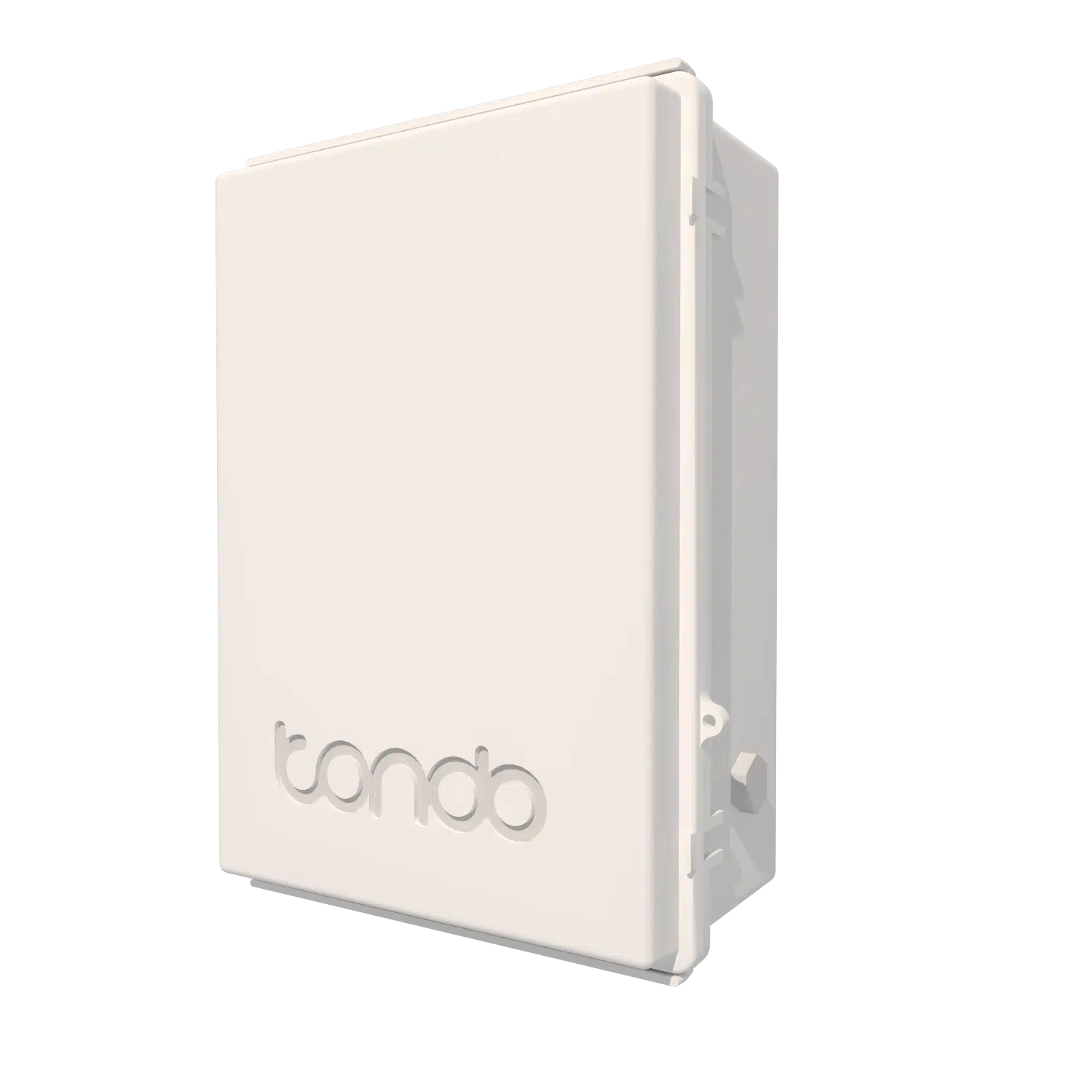
Tondo Smart Cabinet-IQ Controller
FROM LIGHTING CABINET…
TO SMART ENERGY MANAGEMENT
Experience Cabinet-IQ, the hub of cutting-edge lighting cabinet control and monitoring. Designed to bridge efficiency with intelligence, Cabinet-IQ offers:
- Integrated Ecosystem: Perfectly synchronized with Edge-IQ controllers and Cloud-IQ, Cabinet-IQ ensures seamless control and advanced energy monitoring of street and area lights.
- In-depth Energy Monitoring: Beyond basic monitoring, dive deep into electrical usage insights and quality. Spot anomalies, including electricity theft, electrical faults, and electricity quality
- Advanced Problem Detection: Leveraging its advanced electricity metering and monitoring capabilities Cabinet-IQ identifies issues ranging from minor glitches to major threats to critical infrastructure to avoid expensive surprises
- Unified Control: Thanks to our patented DeviceTone firmware, Cabinet-IQ is adept at integrating with a vast array of sensors, meters, and digital and analog actuators and controls for nearly any use-case
- Resiliency: Cabinet-IQ offers sealed 365-day retention of energy metering data with a 40-hour UPS option for full operations in the event power is lost entirely
With Cabinet-IQ at the helm, you can empower your lighting infrastructure to be more than just illumination. Experience proactive monitoring, comprehensive control, and a complete end-to-end solution for all of your lighting management needs.
Tondo Cloud-IQ Management System
A UNIFIED SINGLE-PANE OF GLASS FOR SMART CITY MANAGEMENT
Dive into the future with Cloud-IQ, the comprehensive platform for all Smart City endeavors. What makes Cloud-IQ different:
- Unified Smart City Platform: Tondo’s Cloud-IQ is designed to collect very large amounts of data in real-time from any types of sensors or connected devices
- Advanced AI & ML: With native artificial intelligence, Cloud-IQ analyzes, predicts, and optimizes, turning vast amounts of raw data into high-value actionable insights
- Advanced Cybersecurity: Leveraging the hardware-based security from our Edge-IQ controllers and providing customers with their own end-to-end private network, Cloud-IQ protects connected critical infrastructure
- Dynamic Scalability: Designed to evolve, Cloud-IQ effortlessly accommodates the exponential growth of sensors and devices, ensuring performance never wavers.
- End-to-End Solution: From sensor data collection to intricate analytics, Cloud-IQ serves as a singular platform addressing all Smart City use-cases.
Empower your city with a platform that’s as visionary as your ambitions, ensuring efficiency, security, and improved delivery of services for your organization.
Tondo Mobile-IQ Field App
The Essential Companion for Field Installations
Step into a world of efficient installations and effortless data retrieval with Tondo’s Mobile-IQ. Tailored for lighting technicians and cabinet installers, this Android-native tool shines equally during Tondo-controlled luminaire setups or Cabinet-IQ installations.
With automatically-configured profiles in Cloud-IQ, provisioning is a breeze. Scan, authenticate, and let Mobile-IQ do the heavy lifting.
Here’s what Mobile-IQ brings to the table:
- Bluetooth-Enhanced Data Retrieval: Connect directly to Edge-IQ controllers, enabling on-site data collection post-installation.
- Customized Data Entries: Embed personalized details, from inventory specifics to technician details.
- Immediate Diagnostics: Test connections, lighting dynamics, and cabinet functions instantly.
- Comprehensive Installation Records: Track every device and cabinet set up by individual technicians.
- Effortless Updates: Feed updated configurations straight back to the Cloud-IQ CMS.
Project deployments are faster, more reliable, and less costly with the unparalleled capabilities of Tondo’s Mobile-IQ.
Edge-IQ Lighting Controllers
Tondo Edge-IQ
NEMA Socket
Tondo Edge-IQ
Zhaga Socket
ANSI C137.41 on 5- and 7-pin receptacles
NEMA C137.4-2021
DALI-2 control
Integrated DALI power supply supports up to 6 LED drivers
Full support for DALI D4i sensor control, energy management, and color
0-10V (IEC60929 Annex E, ANSI C82.11) dimming dynamically configurable
Linear and logarithmic dimming
Integrated relay with maximum switching load 20A
DALI-2 and D4i control
Integrated DALI power supply supports up to 6 LED drivers
Full support for DALI D4i sensor control, energy management, and color
Linear and logarithmic dimming
Voltage
Accuracy Class 0.5S
Burn time
Cycle counters
AC Voltage (RMS, average)
Current (RMS, average)
Power (RMS, average)
Power frequency
Power factor
Power load
Lighting circuit power load
Burn time and cycle counters
Operational status monitoring
Output status monitoring
Voltage
Accuracy Class 0.5S
Burn time
Cycle counters
AC Voltage (RMS, average)
Current (RMS, average)
Power (RMS, average)
Power frequency
Power factor
Power load
Lighting circuit power load and much more
Burn time and cycle counters
Operational status monitoring
Output status monitoring
autonomous operation in the event of network disconnects
Dual cellular networks with failover
Onboard GLONASS/GPS with global coverage
Integrated accelerometer for vibration and tilt monitoring
autonomous operation in the event of network disconnects
Dual cellular networks with failover
Onboard GLONASS/GPS with global coverage
Integrated accelerometer for vibration and tilt monitoring
Zero-Management Wireless Network
Cellular: LTE-M/CAT-M1, CAT NB-IoT, and EGPRS
Dual cellular SIM/e-SIM
Bluetooth: Bluetooth Beacon, Bluetooth 5 LE, Bluetooth Mesh
Integrated dual high performance integrated antennas
Zero-Management Wireless Network
Cellular: LTE-M/CAT-M1, CAT NB-IoT, and EGPRS
Dual cellular SIM/e-SIM
Bluetooth: Bluetooth Beacon, Bluetooth 5 LE, Bluetooth Mesh
Integrated dual high performance integrated antennas
DC Output voltage: 24V DC, 2W
Power Consumption: less than 1.5 watts @ 240V AC
Rated current: 16A @ 240VAC, 400W, 4300VA
AC Line In Fuse: 10A slow blow
Transient Protection: Minimum 350 joules 10Ka surge
DC Output voltage: 24V DC, 2W
Power Consumption: less than 1.5 watts @ 240V AC
Rated current: 16A @ 240VAC, 400W, 4300VA
AC Line In Fuse: 10A slow blow
Transient Protection: Minimum 350 joules 10Ka surge
Relative humidity: 5% to 99% non-condensing
Ingress: IP66 Class per IEC 60529
Relative humidity: 5% to 99% non-condensing
Ingress: IP66 Class per IEC 60529
RoHS per 2011/65/EU & amendments
EN/IEC 60068-2-1:2007
EN 61000-3-2:2014
DALI/DALI-2/DALI D4i compatible
ANSI C136.10
ANSI C136.41
ANSI C136.48
ISO 27001:2013 December 2022
Israel EN 302 208
UL94V-0 Flame retardant ABS or Epoxy molding
RoHS per 2011/65/EU & amendments
EN/IEC 60068-2-1:2007
EN 61000-3-2:2014
DALI/DALI-2/DALI D4i compatible
ANSI C136.10
Zhaga Book 18 v3
ISO 27001:2013 December 2022
Israel EN 302 208
UL94V-0 Flame retardant ABS or Epoxy molding
Tondo Cabinet Control and Energy Monitoring Solutions
Tondo Cabinet-IQ Controller
Designed for reliability and 24/7 operation
DIN-rail and wall mount options
Power Consumption: 9W
Output Voltage: 0.15A/24V AC/DC / DC 8V-36V
Relative Humidity: 10% to 90% non-condensing
Impact Resistance: IK07 per IEC62262
Ingress: IP30 Rated
Integrated GPS
1 x Digital Input
1 x Digital Output
4 x 250V/5A AC Analog Outputs
1 x .15A/24V Solid-State Relay
Optional Cabinet I/O Expansion
Optional 1 x MODBUS RS-232/485 serial
Optional Electrical Metering and Measurement (EMM) Module that includes:
1 x Digital Input 5V DC (dry contact)
1 x Solid-State Relay 0.15A/24DC (dry contact)
MODBUS RTU over RS-485 Serial @ 115.2 kb/s
90 day data retention
3 x Current Channels - 1A, 5A, 63A
Energy Measurement: AC Voltage (RMS, Average), Current (RMS, Average), Power (RMS, Average), Power Frequency, Power Factor, Controller Power Load, Lighting Circuit Power Load, Individual voltage & current harmonic spectrum, Harmonic angles up to 40th order harmonic, Voltage and current THD, TDD and K-Factor, Measurement range 15-480/828V AC (L-N/L-L), Measurement frequency range 25-400 Hz
Electricity Metering and Measurement Module Expansion Options (select one of the following):
4 x Analog Output with available range options: ±1 mA, max. load 5 kΩ, 0-20mA, 0-1mA, 4-20mA, 0-1mA,0-3mA,±3 mA,0-5mA, ±5 mA
4 x Digital Input (dry contact) + 2 x Relay 250V/5A AC
4 x Digital Input (dry contact) + 2 x Solid-State Relay 250V / 0.1A AC
4 x Digital Input (dry contact) + 365-Day Real-Time Clock Backup
12 x Digital Input (dry contact 48V, 125V or 250V) + 4 x Relay 250V/5A AC
1 x Solid State Relay - 0.15A/250V AC/DC
1 x Electromechanical Relay 5A/250V AC; 5A/30VDC
1 x RS-232/422/485 up to 115.2 kbps supporting MODBUS RTU, DNP3, SATEC ASCII, IEC 60870-5-101
Optional 48-hour UPS for complete operational continuity
EMI: Draft EN 301 489-1 V2.2.0, Draft EN 301 489-19 V2.1.0, Draft EN 301 489-52 V1.1.0
ESD: EN 61000-4-2:2009
RS: EN 61000-4-3:2006 + A1:2008 + A2:2010
EFT: EN 61000-4-4:2012
Surge: EN 61000-4-5:2014
CS: EN 61000-4-6:2014
DIP: EN 61000-4-11:2004
RF: EN 301 908-1 V11.1.1, EN 301 908-2 V11.1.1, EN 301 908-13 V11.1.2, EN303 413 V1.1.1
Safety: EC 62368-1:2014, EN 62368-1:2014 + A11:2017, EN 50665:2017, EN 62311:2008
Tondo Unified Smart City Central Management
Tondo Smart Cloud-IQ CMS
Large-Scale Systems Data Lake
Cloud-Native Microservices Architecture
Request a Live Demonstration
We’ll walk you through a real-world street lighting deployment and show you how easy it will be to transform your roadway lighting assets into a Smart City platform.
Tondo Product FAQ
Has Tondo deployed to large projects?
Tondo’s project with Netivei, Israel’s national transportation authority, will reach over 200,000 light poles when completed, and an indetermined number of sensors, cameras, and energy meters.
Can we install Tondo CMS in a private cloud?
Yes. Tondo’s CMS platform is built on a cloud-native microservices architecture using Kubernetes containers. Tondo’s cloud currently resides on AWS but may be installed on Microsoft Azure or Google Cloud.
Can you create custom reports in Tondo's Cloud-IQ CMS?
What does Tondo mean by "plug and play"?
Once connected, a Tondo controller will query the type of lighting it is connected to, the sensors or devices connected to it, the GPS/GLONASS location data, and send that and the device information to the Tondo Cloud-IQ CMS and apply a default or custom profile to the device for automated configuration and instant operation.
How secure is a Tondo device and network?
Tondo’s Edge-IQ controllers use the ARM Cryptocell Security-on-Chip (SoC) that enables each device to be secured with a unique key stored in a secure vault. The Cryptocell cryptographic accelerator generates a unique key for every communication session, and the root key is re-generated each time a firmware update or controller reset is initiated.
You can read more about the capabilities of the ARM Cryptocell 300 family at this link.
Does Tondo provide pre-sale support to partners?
Absolutely. Just choose one of the buttons on our website to get in touch, and we will work with designers, architects, and systems integrators on their projects and proposals.
Is Tondo looking for new distributors or channel partners?
Yes. We are looking for leading distributors, lighting contractors/systems integrators, and channel partners who have great relationships with their customers and want to add the best Smart Lighting and Smart City IoT network solution to their line cards.
Contact us using the Contact Us button on this page, and let’s talk!
Does every Tondo controller need a cellular connection?
No, but they all have an integrated cellular gateway that requires zero network management.
Tondo controllers connect with each other via Bluetooth in a star or mesh configuration, and use any controller with the cellular (EGPRS or LTE to communicate with the Tondo Cloud-IQ Central Management Software (CMS).
The advantages of having both a Bluetooth and cellular network are:
1) Cellular networks are energy-inefficient for battery-powered sensor connectivity, limiting them to direct-wire applications. Bluetooth sensor battery life can last up to five years.
2. Cellular networks may be over-loaded by the enormous scale of Smart City networks, creating additional capacity costs for cities.
3. Mesh networks of sensors and controllers can provide unique data sets consumed by artificial intelligence systems that would not be available with direct-to-cloud cellular networks.
Am I locked into a proprietary solution?
Tondo is committed to open systems and interoperability. Our selection of the full-stack Bluetooth wireless specification is one example. Our support for the TALQ interoperability specification for Smart City management software is another, as is our support for DALI, ANSI, Zhaga, and our provision of RESTful APIs and out-of-box connectors for third party applications.
What happens if my cellular provider's network goes down?
Tondo’s Edge-IQ controller contains a dual-SIM/eSIM that supports dual cellular network failover for maximum up-time.
Tondo controllers will also operate with their current profile stored in the firmware autonomously. Dimming and on/off operations are not depedent on an “always-on” cellular network connection.
Built-in sensor data is cached in the controllers until a connection is restored to prevent loss of data.
Any pending updates sent from the CMS will be updated when the connection is restored.

